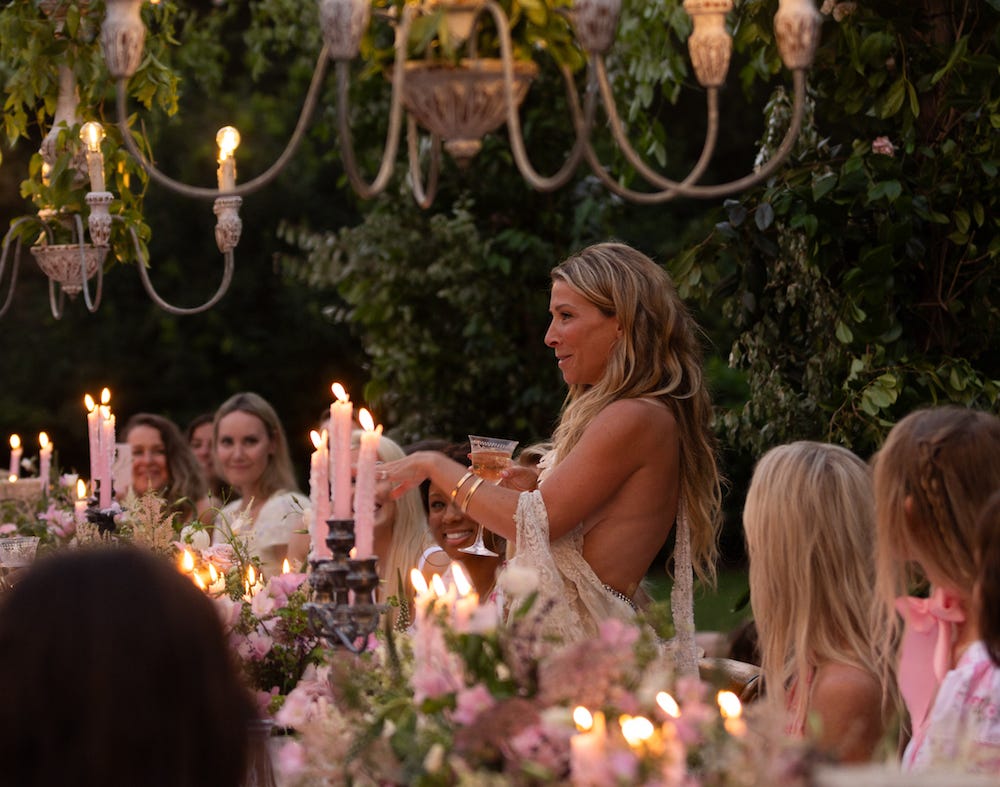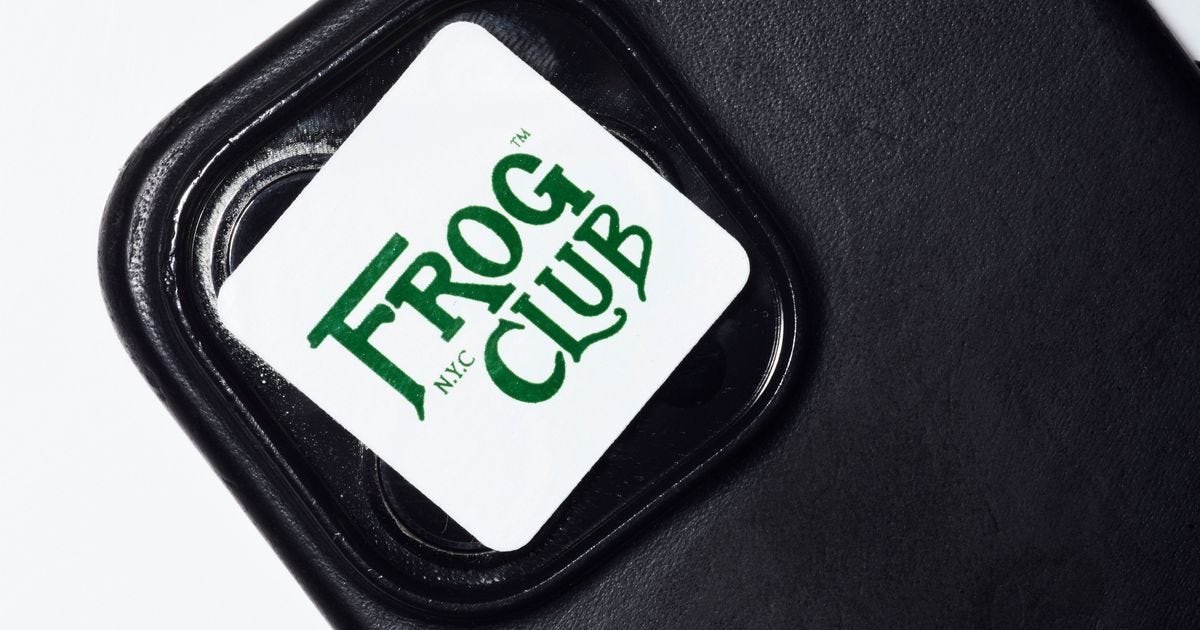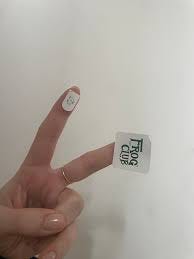Caught My Attention Ed. 06: Social Media PostModernism
What Frog Club and Don DeLillo have in common
This week, I was swept up thinking about two, super secret brand experiences circling around the internet: Frog Club, and The Row’s Paris Fashion Week presentation. For those who know neither shadow spectacle, let me explain.
Frog Club is a new West Village restaurant founded by Liz Johnson, same chef from LA’s popular celebrity den Horses, and whose restaurant’s main quirk (of many) is that there are absolutely no phones or photos allowed. It’s become an impossible table, not just for the food but for the right to see what’s behind the wizard’s curtain.
The Row’s FW2024 presentation in Paris also had a no phone, no photo policy, which flew in the face of the fever-pitch social media streaming and nepo-baby pumping that have become hallmarks of recent fashion weeks. Attendees were provided refreshments and a notebook where they could note what inspired them about the show.
For some reason, it really got my gut. But why? How do I articulate why this strikes me so? I have been asking myself that, and I think it’s because it crystalizes a new phase of social media, one that is self referential, self-aware, and metafictional: without sounding grandiose, I would argue this is a new form of social media postmodernism. Let me explain that a little.
First, let’s start with postmodernism in literature (oh god, cracks knuckles to attempt to remember sophomore year lit theory). Thomas Pynchon, Don DeLillo, Toni Morrison and others all heralded this reaction to modernism, marked with a distinct level of fragmentation, self-reference, irony, intertextuality, and a rejection of the idea of universal truths. So much of what postmodernism does is highlight the commodification of experience, embracing the absurdity and pervasiveness of consumerism. Take this passage from DeLillo’s “White Noise”:
"We drove 22 miles into the country around Farmington. There were meadows and apple orchards. White fences trailed through the rolling fields. Soon the sign started appearing. THE MOST PHOTOGRAPHED BARN IN AMERICA. We counted five signs before we reached the site. There were 40 cars and a tour bus in the makeshift lot. We walked along a cowpath to the slightly elevated spot set aside for viewing and photographing. All the people had cameras; some had tripods, telephoto lenses, filter kits. A man in a booth sold postcards and slides -- pictures of the barn taken from the elevated spot. We stood near a grove of trees and watched the photographers. Murray maintained a prolonged silence, occasionally scrawling some notes in a little book."
In this scene, the “Most Photographed Barn in America” becomes a self-perpetuating spectacle, where people visit just to take pictures of a barn or buy photos of the barn that they are also looking at, which has been reduced to a tourist attraction and an image that can be bought and sold.
It’s easy see how prescient these writers have become. How often have we gone to a fill-in-your-celeb concert only to see a sea of people not watching the show, but watching their phones which are taking videos of the show in order to post on social media and broker their lived experience, which is sold to other voyeurs for likes (the primary digital currency) and for affiliate clicks.
Social media, in its most evolved state, distills and commodifies experience. Content creators, all 1.1 million of them in US, are the fastest growing segment of small businesses, and their success is predicated on the consumption of their lifestyle - vacations to Mexico, beauty regimens, energy drinks, vitamins, classes. We as the consumers have become accustomed to knowing that any experience broadcast on social is underpinned by an economy of brand.
As I have written about before, brands spend massive dollars on social media; in our Brand Discovery study at Alpaca VC, social media was the primary traffic driver for 41% of brands. And that is not counting offline appearances and sponsorships with a clear social megaphone - the prime example of this being the “influencer dinner” where twenty social media stars gather, often wearing or donning the brands’ products, to celebrate some conjured milestone and to create reels of content for those at home to watch - and hopefully convert. With so much money going toward paid posts, affiliate marketing, and content creation, social media can be argued to have become an artifice of experience, and many yearn for the good old days of “just being in the moment”.
Without trying to cast moral judgement, I believe both The Row and Frog Club are touting no phone policies in order to bring participants into the moment. In theory, it is a way to sever the connection from online to offline and to create a present-tense, ephemeral experience. One that casts aside the dizzying and self-perpetuating spectacle of social content creation, and centers on a more special, intimate relationship to the environment around us.
I would also argue, though, that no phone policies are a higher form of marketing exclusivity, a sort of social postmodernism, where the act of being present offline is again being commodified and branded, where the value of the exchange still exists in the void of the experience online, in the allusion to it, which subverts the uniqueness and splendor of the experience itself. To me, this concept is epitomized in the photo people take of Frog Club stickers they receive at the restaurant’s door to cover their phones; a photo that simultaneously creates a digital trophy, a sort of neo postcard, of the aspirational offline experience while claiming to transcend social media altogether.
To me, it feels forced and ironic, the way that creating a paid membership social club feels like a forced way to cure loneliness. Perhaps this is me being a curmudgeon, not hip to the new wave; or perhaps this is my authentic psyche pushing back on yet another capitalist infiltration of some of the last safely humanistic corners in our lives. Buying “living in the moment” feels dystopian in the way that a DeLillo novel does; and I am curious how the trend continues to evolve.









Agree 100% re: frog club -- and I think that's partially why so many not favorable reviews and pieces are coming out about it now. The Row to me is a bit different. When I tried to find who went to the show, I could barely find anyone - maybe 2-3 people. And they mostly shared stories from the show, not pictures of the notebook and the pencil that were given out which could be clout attributes like the frog club sticker (saw the pencil only a few days ago on someone's story and it's chic haha). Plus, I honestly loved the conversations The Row started in the industry that week!